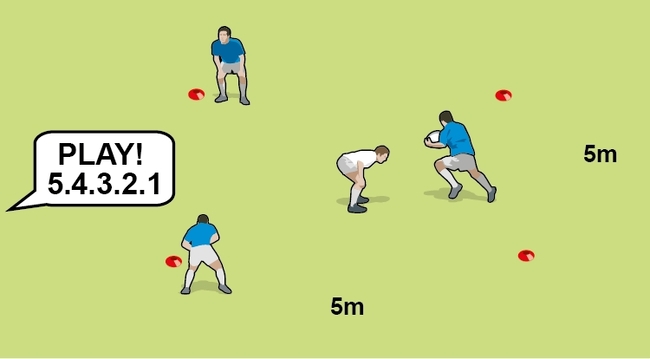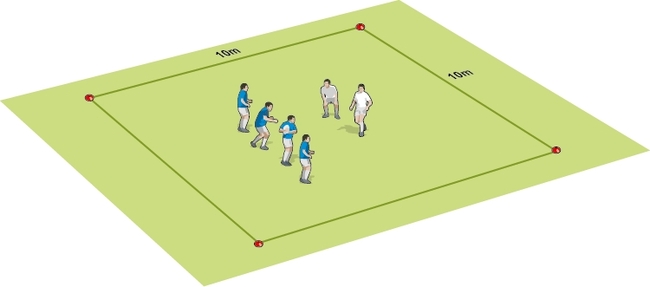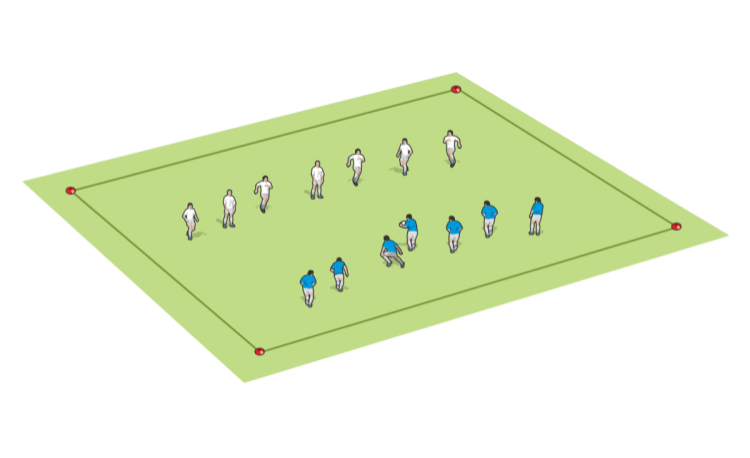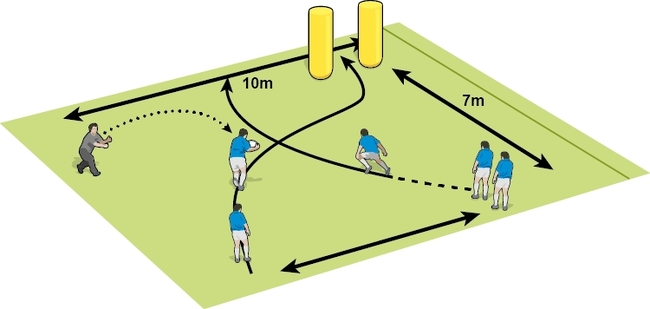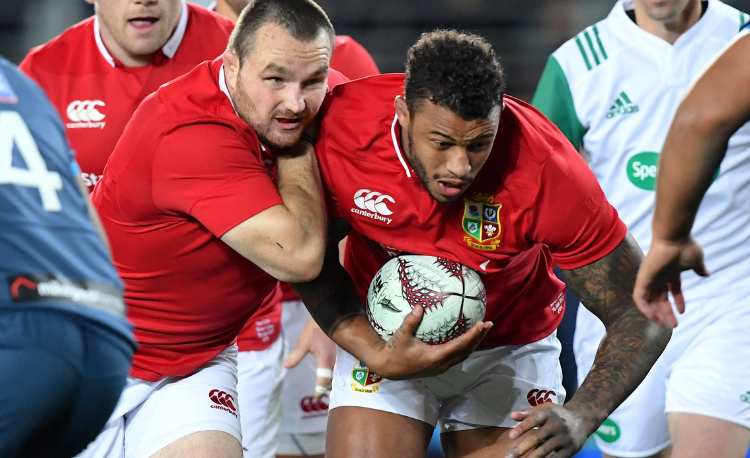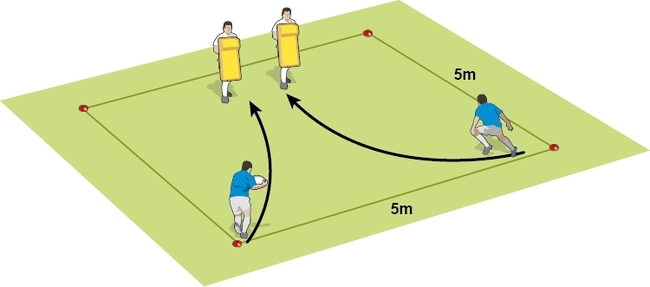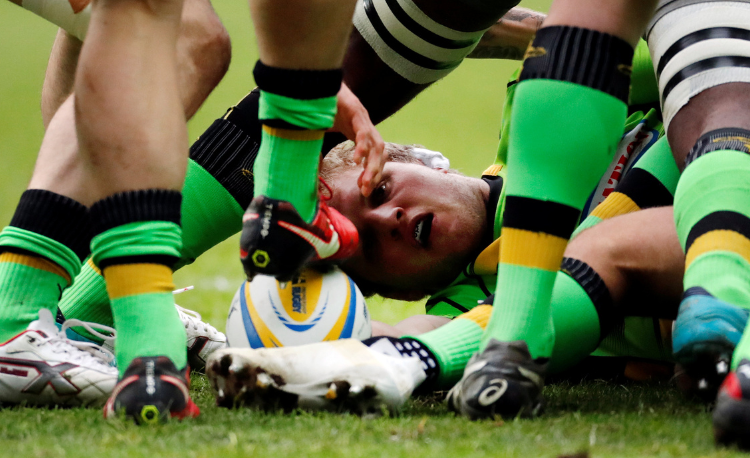Find the bib – playing in four dimensions
Adapted from a game called ’drop-off touch’, this challenges players to look for and create mismatches. By Loughborough University coach ANTHONY ALLEN.
Playing heads-up rugby is not just about attacking space – it should be played in four dimensions.
That means thinking ahead as well as playing what’s around you. In this game, players need to attack a point which creates a space in the future.
The game
Start by playing the game ’drop-off touch’.
In this, if an attacker is touched by a defender, that defender drops off to a cone, pole or the try line they are defending before returning to the game.
At the breakdown, when the attacker is touched, they go down, long-place the ball and the next player plays as the 9. This can be adjusted, depending on the numbers playing.
Now, put the defensive team into two colours of bibs – let’s say red and green, as shown above.
If playing four-minute halves, the red bibs would be the only defenders dropping off for the first two minutes; then you would change to the greens dropping off for two minutes.
If there is an error or infringement by the attacking team, they start again from their own try line.
Four dimensions of rugby
- Forward and back (think attack, defence)
- Side to side (think passing, evasion)
- Up and down (think kicking)
- Time (think disrupting the defence to create space in the next phase of play)
Thank you for reading
to enjoy 3 free articles,
our weekly newsletter, and a free coaching e-book
Or if you are already a subscriber, login for full access
Newsletter Sign Up
Coaches Testimonials

Gerald Kearney, Downtown Las Vegas Soccer Club

Paul Butler, Florida, USA

Rick Shields, Springboro, USA

Tony Green, Pierrefonds Titans, Quebec, Canada
Subscribe Today
Be a more effective, more successful rugby coach
In a recent survey 89% of subscribers said Rugby Coach Weekly makes them more confident, 91% said Rugby Coach Weekly makes them a more effective coach and 93% said Rugby Coach Weekly makes them more inspired.
Get Weekly Inspiration
All the latest techniques and approaches
Rugby Coach Weekly offers proven and easy to use rugby drills, coaching sessions, practice plans, small-sided games, warm-ups, training tips and advice.
We've been at the cutting edge of rugby coaching since we launched in 2005, creating resources for the grassroots youth coach, following best practice from around the world and insights from the professional game.




